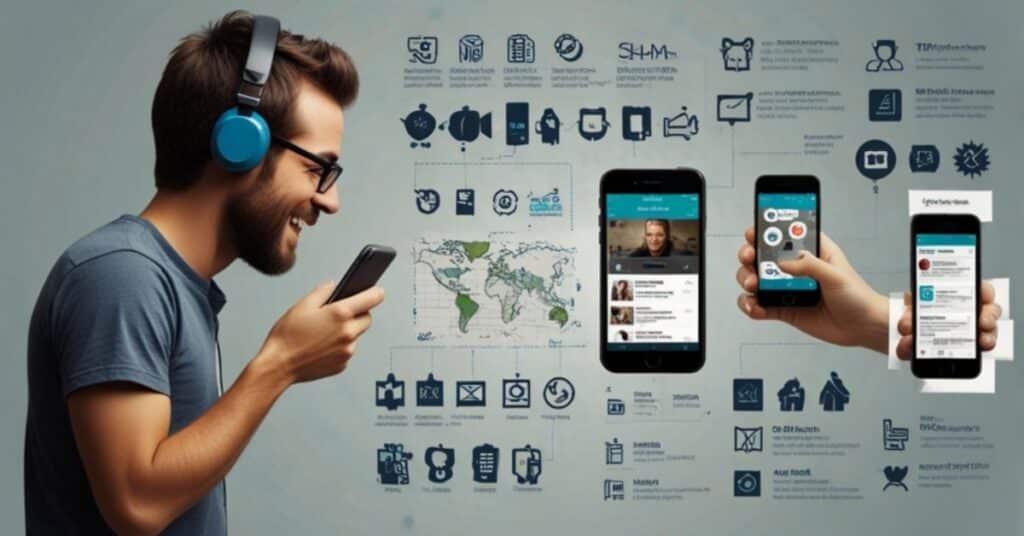Ever found yourself staring at your screen, wondering what “SMH meaning in texting” actually stands for? You’re not alone. Whether it’s in a group chat, a meme, or a viral tweet, SMH pops up everywhere, leaving some of us scratching our heads. But don’t worry by the time you finish this article, you’ll not only know what it means but also how to use it like a pro.
Think of SMH as your go-to reaction for those moments when words just aren’t enough. From facepalming at a friend’s questionable life choices to laughing at the absurdity of the internet, it is the ultimate shorthand for “I can’t even.” Ready to dive in? Let’s break it down!
What Does SMH Even Stand For?
First things first: SMH stands for “Shaking My Head.” That’s it. No secret codes, no hidden meanings—just a simple abbreviation for the universal gesture of disbelief, disappointment, or exasperation.
Think about it: when someone says something so ridiculous that you can’t even form words, what do you do? You shake your head. It’s the physical equivalent of saying, “I can’t even.” And now, thanks to the magic of the internet, we’ve turned that gesture into three little letters.
Why Do People Use It?

Good question! People use SMH for a variety of reasons, but it usually boils down to one thing: they’re reacting to something that’s either absurd, frustrating, or just plain dumb.
Here’s a quick breakdown of when you might see it in action:
- Disbelief: When someone says something so wild that you can’t believe they actually said it.
- Disappointment: When someone does something that makes you question their life choices.
- Exasperation: When you’re just so done with a situation that all you can do is shake your head.
It’s like a digital facepalm, but with a little more sass.
SMH in the Wild: Real-Life Examples

Let’s make this even clearer with some examples. Because let’s be real, nothing helps us understand something better than seeing it in action.
Example 1: The Classic “Did You Really Just Say That?”
Scenario: Your friend texts you, “I just tried to microwave my phone to charge it faster.”
Your Response: “SMH. Please tell me you’re joking.”
Example 2: The “I Can’t Believe This Is Happening” Moment
Scenario: Your coworker sends an email with the subject line, “URGENT: Where do I find the ‘any’ key?”
Your Response: “SMH. It’s 2023. How are you still alive?”
Example 3: The “Why Are You Like This?” Situation
Scenario: Your sibling posts a selfie with the caption, “Me after eating an entire pizza by myself. No regrets.”
Your Response: “SMH. Your stomach is going to hate you tomorrow.”
See? It is versatile. It’s the Swiss Army knife of internet reactions.
Common Misconceptions About SMH
Now, let’s clear up some confusion. Because, believe it or not, not everyone is on the same page when it comes to SMH.
Misconception 1: SMH Means “So Much Hate”
Nope. Not even close. While it’s true that SMH can be used in situations where someone is expressing frustration, it doesn’t mean “So Much Hate.” That’s a common mix-up, but trust me, it’s all about the head-shaking.
Misconception 2: SMH Is Always Negative
Not necessarily! While SMH is often used in response to something ridiculous or annoying, it can also be used in a playful or lighthearted way. For example:
Scenario: Your friend sends you a meme of a cat wearing sunglasses.
Your Response: “SMH. This is the best thing I’ve seen all day.”
See? It’s not always doom and gloom.
How to Use It Like a Pro
Ready to start using SMH in your own texts and posts? Here are a few tips to help you master the art of head-shaking:
- Know Your Audience: Make sure the person you’re texting understands what it means. You don’t want to leave them scratching their head (pun intended).
- Use It Sparingly: SMH is like hot sauce—a little goes a long way. Overuse it, and it loses its impact.
- Pair It with Emojis: Add a 🤦♂️ or a 😂 to really drive your point home. Emojis are the peanut butter to SMH’s jelly.
SMH Around the World
Here’s a fun fact: SMH isn’t just an English thing. People all over the world use it to express their disbelief, even if they’re not typing in English. It’s like the universal language of “I can’t even.”
For example:
- In Spanish: “SMH. No puedo creerlo.”
- In French: “SMH. C’est n’importe quoi.”
- In German: “SMH. Ich fasse es nicht.”
No matter where you are, it transcends language barriers. It’s the ultimate global reaction.
When NOT to Use SMH
As much as we love SMH, there are times when it’s best to avoid it. Here are a few situations where you might want to think twice before dropping that acronym:
- In Professional Emails: Unless you’re texting your work bestie, keep it out of your professional correspondence. Your boss probably won’t appreciate it.
- During Serious Conversations: If someone’s sharing something personal or emotional, it might come off as dismissive or insensitive.
- When You’re Actually Laughing: If something is genuinely funny, you might want to go with “LOL” or “😂” instead. SMH can sometimes come off as sarcastic.
The Evolution of SMH

Believe it or not, SMH has been around for a while. It first gained popularity in the early 2000s, when texting and instant messaging were becoming the norm. Back then, people were all about shortening words and phrases to save time (and texting fees).
But SMH has evolved over the years. What started as a simple abbreviation has become a full-blown internet phenomenon. These days, you’ll see it everywhere—from memes to hashtags to viral tweets. It’s even spawned variations like SMFH (“Shaking My Freaking Head”) for when you’re really exasperated.
SMH: A Cultural Icon
At this point, SMH is more than just an acronym—it’s a cultural icon. It’s a symbol of our collective exasperation with the world around us. Whether we’re shaking our heads at bad decisions, ridiculous news stories, or just the general chaos of life, it gives us a way to express our feelings without having to type out a whole paragraph.
And let’s be honest: in a world where things seem to get crazier by the day, we need it more than ever.
Your Turn: How Do You Use SMH?
Now that you’re an expert on this iconic internet reaction, I want to hear from you! How do you use it in your daily life? Do you have a favorite moment that made you shake your head? Or maybe you’ve come up with your own creative variations?
Drop a comment below and let me know. And the next time you see something that leaves you speechless, don’t forget to let the world know with a well-placed head-shake.
Until then, keep those reactions coming, my friends. The internet wouldn’t be the same without you. 😉

Carla Smith is an expert blogger specializing in English grammar and vocabulary, dedicated to simplifying language learning through insightful tips and engaging content.






